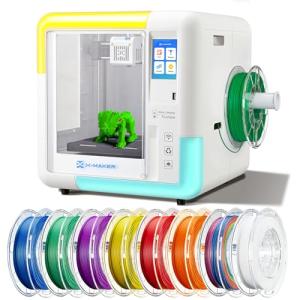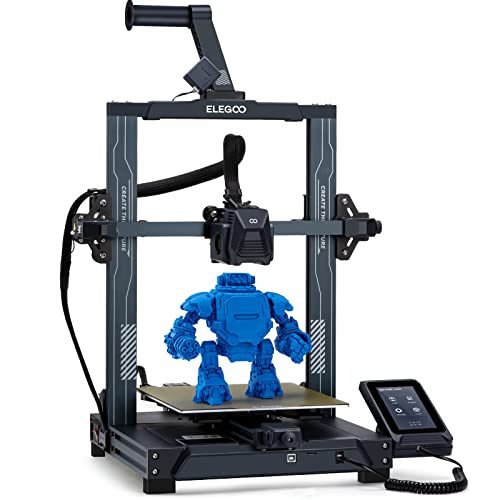Jumping into the world of 3D printing can feel a bit overwhelming, but it doesn't have to be! With the right info, you can easily navigate your way through. First off, let's talk about 3D Printers for Beginners. Choosing the right printer is key. Look for models that offer simple setups and user-friendly interfaces. Brands like Creality or Anycubic are great starter options.
Next up is filament. This is the material your printer will use to create objects. PLA is a popular choice for newbies because it's easy to work with and gives good results. Once you pick your filament, make sure to have enough on hand, especially if you're planning to print a few larger projects.
Don’t forget about software! You'll need slicer software to prepare your designs for printing. Programs like Cura or PrusaSlicer are easy to use and great for beginners. They let you adjust settings like layer height and print speed to get the best outcomes.
Finally, practice makes perfect. Start with simple designs, and don't hesitate to experiment. Websites like Thingiverse have tons of free models you can download. Take your time learning the ins and outs of your 3D printer, and soon enough, you'll be creating awesome projects that showcase your skills!
Choosing the Right 3D Printer
When diving into the world of 3D printing, picking the right printer can feel a bit overwhelming, especially for beginners. There are so many options that it’s easy to get lost in all the tech jargon and fancy features. But don't worry! Let’s break it down into simple factors to consider.
First off, think about what you want to create. Are you interested in printing miniatures, toys, or even functional parts? Some 3D printers for beginners are better suited for specific projects. If you want detailed designs, look for a printer that offers higher resolution. If you're focused on something more robust, you might need a sturdier model with a larger build volume.
Next on the list is the ease of use. Many 3D printers for beginners come with user-friendly interfaces, making it easier to set up and start printing without feeling like you need a degree in engineering. Look for features like Wi-Fi connectivity, touchscreen controls, and easy assembly. Reviews can give you insight into which models are the easiest to operate.
Don’t forget about material compatibility. Some printers only work with certain types of filament, while others offer more versatility. ABS and PLA are popular options for newcomers, as they’re easy to work with and readily available. Make sure your printer can handle the materials you want to use.
Finally, keep your budget in mind. You can find solid 3D printers for beginners at various price points, so it’s crucial to choose something that fits your wallet without skimping on quality. Do a little research to find the best value for your needs, and you’ll be well on your way to enjoying all the fun that 3D printing has to offer!
Ender 3 V2 FDM 3D Printer for Beginners
Get ready to create amazing projects with this user-friendly printer that makes 3D printing fun and hassle-free
Product information
$433.69
Product Review Score
4.27 out of 5 stars
140 reviewsProduct links
Basic Materials for Your Projects
When you're diving into the world of 3D printing, it’s super important to know your materials. Different projects require different materials, and understanding these options can really boost your 3D printing game. Let’s talk about some of the basics to get you started.
One of the most popular materials for 3D printers for beginners is PLA. This stuff is made from plant-based resources, making it a go-to for those just starting out. It’s easy to print with, doesn’t warp much, and comes in a ton of colors. If you want to print something like toys or simple models, PLA is your best buddy.
Next up is ABS. This material is a bit trickier but offers durability and strength. If you’re planning to create items that need to withstand some wear and tear, ABS is a solid choice. Just keep in mind that it can warp, so you’ll need a heated bed and good ventilation when printing with it.
Another option worth checking out is PETG. This material combines the best of both worlds—it's tough like ABS and easy to print like PLA. It’s resistant to impact and moisture, making it great for functional parts or even outdoor projects. Plus, it has that nice glossy finish!
As you explore the world of 3D printers for beginners, try out different materials based on what you need for your projects. Knowing the right material can make a big difference in your results and help bring your creative ideas to life!
AOSEED X-Maker 3D Printer for Kids and Beginners
A user-friendly 3D printer that makes creating fun projects easy and exciting for kids and beginners
Product information
$459.99 $367.99
Product Review Score
4.3 out of 5 stars
7 reviewsProduct links
Tips and Tricks for Success
Getting started with 3D printers for beginners can be exciting yet a bit daunting. Here are some handy tips and tricks to help you navigate the world of 3D printing like a pro!
First off, always start with good quality filament. Not all filaments are created equal. Stick to well-known brands to avoid clogs and print errors. You can choose from PLA, ABS, or PETG based on your project needs. PLA is great for beginners since it’s easy to use and environmentally friendly.
Set up your printer in a clean, dry space. Dust and moisture can mess with your prints. A clutter-free area keeps distractions low, so you can focus on getting that perfect print. Also, make sure your printer is leveled correctly before starting. An unlevel build plate can ruin your first few attempts.
Don’t hesitate to experiment with settings. Start with default parameters and tweak them as you learn. It’s all about trial and error. Don’t be afraid to look for online communities and forums. Fellow 3D printing enthusiasts often share their experiences and solutions to common problems.
Lastly, keep patience in mind. 3D printing can take time, especially for larger objects. If something doesn’t go as planned, learn from it. Each failed print is a step closer to getting it right. With these tips, you’ll feel more confident using 3D printers for beginners in no time!





